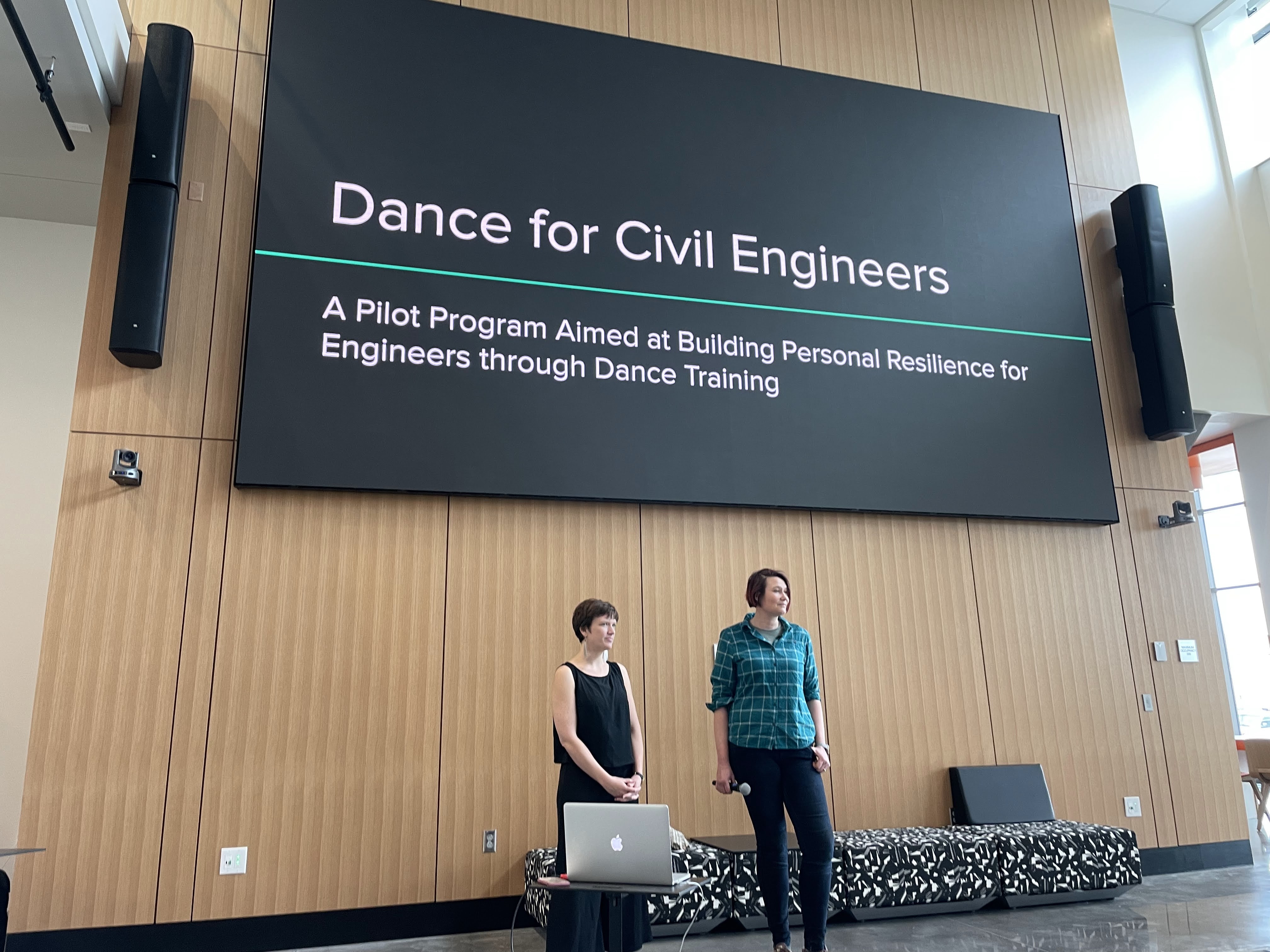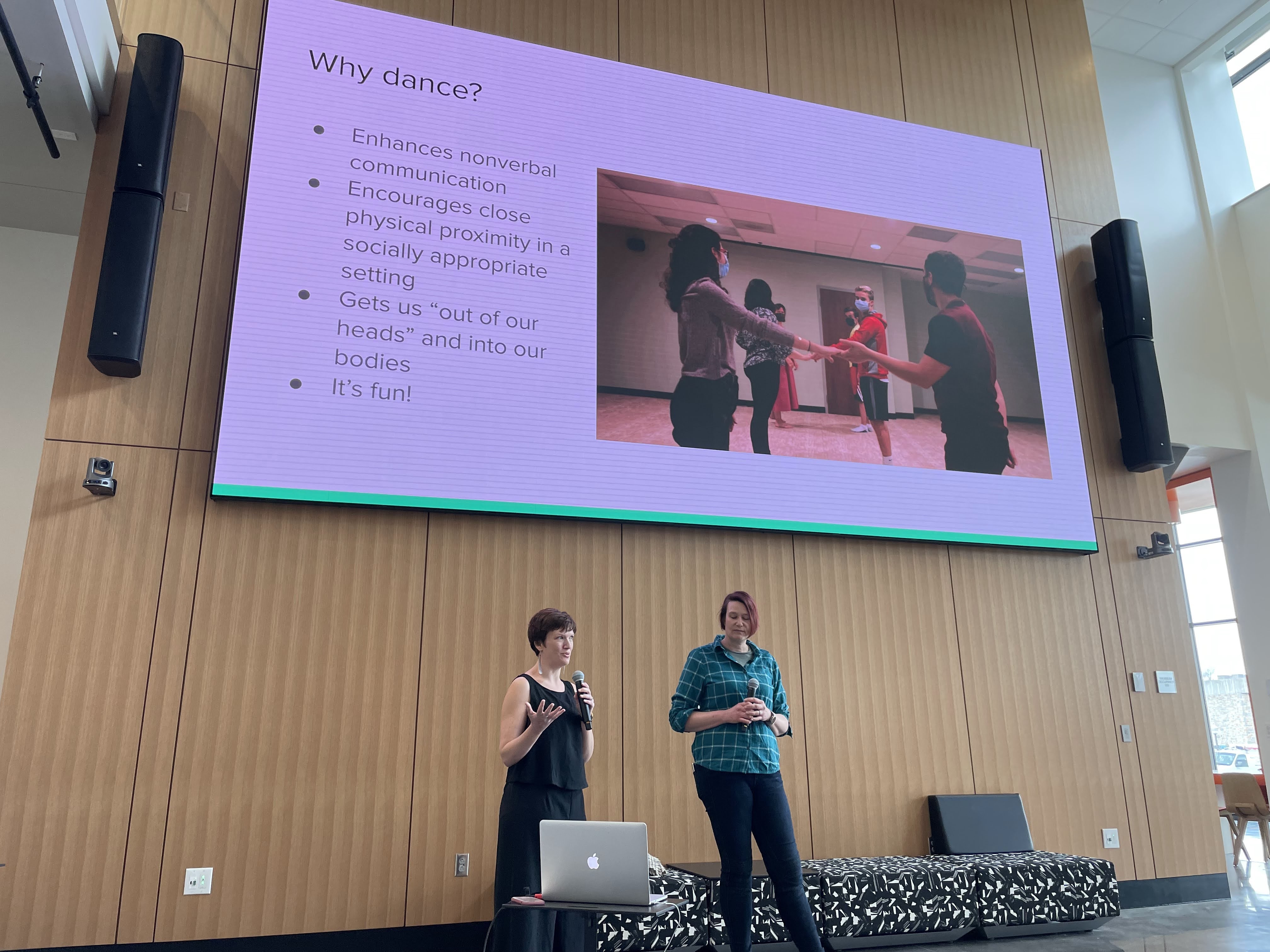Dance Workshops Help Engineering Students Prepare for Field Work
October 6, 2022

A familiar — and uncomfortable — feeling arises in your stomach. You’re an engineer out on a field project and you’re in a room full of unfamiliar faces, often sharing living and working spaces for extended periods of time. It’s awkward, nobody knows what to say, and you’re all a little bit miserable.
This uncomfortable feeling drove a SciArt collaboration between Virginia Tech faculty members Rachel Rugh and Dr. Nina Stark. The two met through an all-day Center for Communicating Science “collaboration incubator” workshop in May of 2021, and their proposal for a dance workshop was funded by the Center.
Rugh and Stark worked together to design a workshop that used communal dance training and movement exercises to help engineering students feel more comfortable with the unpredictability of conditions they may encounter in the field.
Rugh, an adjunct faculty member in the Department of Theatre and Cinema, also works in the Embodied Brain Lab in the Department of Human Nutrition, Foods, and Exercise, focusing on the intersection of dance and mind-body connection. Stark is associate professor in the Charles E. Via, Jr. Department of Civil and Environmental Engineering, with research focused on geotechnical work in coastal environments.

Stark compared the social environment of field research to working on a boat. Researchers and engineers often must share living and eating spaces in close quarters. She noted that field workers, specifically in coastal and offshore environments, tend to struggle with communication when changes in their living and working environments are outside their control.
“Our research brings students, as well as practitioners, academics, and researchers, into unusual places where they may not necessarily have the liberty to stay at certain personal spaces or enjoy the level of housing comfort or living standards that they may be used to,” she said. Hours can be long, living quarters tight, and behavioral norms different from those followed in on-campus labs.
Dance, the collaborators imagined, might help by putting scientists and engineers in a safe environment to let them practice working outside their comfort zones. The idea, according to Rugh, was “seeing if [dance] could be a pathway for teamwork, team-building, communication improvement, and confidence.” They hoped it would be socially transformative for shy scientists and provide opportunities for students to figure out their limitations so that they would be able to communicate effectively when they are feeling uncomfortable.
In the initial workshops, Rugh led a group dancing exercise for community building using folk dance forms. She used movements in square dancing and line dancing to build community and encourage working together. She later brought in Lane Mattox, a local expert in swing dance and salsa, to teach two workshops practicing those dance forms.
A longer workshop on composition forms led participants through a “rapid-fire choreography project” where participants did choreography exercises and then came up with their own dances and shared them with each other.

Stark is optimistic about the future benefits of using dance to help scientists with communication hurdles: “I think after you have stepped on each other’s toes a couple of times, literally,” she said, “it’s easier to tell someone ‘Hey, you are stepping on my toes’ metaphorically. And that sort of clear communication can make working and living in field conditions more comfortable for everyone.”
The collaboration taught Rugh how to carry out repeated experiments in dance without taking creativity out of the experience, she said. Rugh and Stark presented their project during Communicating Science Week last March.
You can watch the video shown during the Communication Science Week presentation here: https://vimeo.com/694587398.
By Brandon Cleary, Center for Communicating Science student intern


